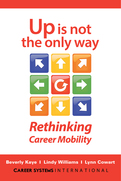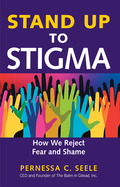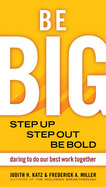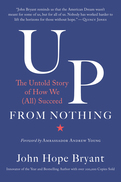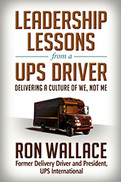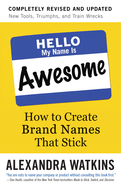Move up or move out. When those two options appear to be the only ones, dissatisfaction grows and engagement suffers. In decades of studying careers around the globe, Beverly Kaye, Lindy Williams, and Lynn Cowart have found that, in fact, there are more options. And rethinking career mobility can lead you to them!
The authors show how managers, coaches, and employees can partner to determine what's best and what's next. Keep the same job but discover new ways to learn and grow? Explore moving to a position that could be a better fit? Step back without getting derailed? This book encourages readers to take a “kaleidoscope” view—to be open to ever-shifting patterns of opportunities and possibilities—so they can create a unique, personalized path to a truly rewarding career.
2017
“Stigma” is a simple two-syllable word, yet it carries the weight of negative and often unfair beliefs that we hold about those who are different from us. Stigmas lock people into stereotyped boxes and deny us all the right to be our authentic and whole selves. Dr. Pernessa Seele, a longtime public health activist who started one of the first AIDS education programs in the 1980s, has crafted a proven method to address stigma. This powerful book confronts stereotype development, shows how to undo the processes and effects of stigma, and explains how we can radically change cultural thinking on the individual, interpersonal, and societal levels to put an end to stigmatization once and for all.
2008
But, particularly today, organizations need people to step up and be BIG. We need new ideas, new products, new processes. People have to bring more of themselves to the workplace, to contribute more, and to have a bigger impact on the success of the organization.
This inspiring illustrated book challenges all of us to show up more fully as individuals and in our interactions with others and to find ways to be BIG together. In straightforward, incisive language, Judith Katz and Frederick Miller help us understand all of the many, sometimes subtle ways we make ourselves small. They show how we make others small as well and how these same attitudes can keep us from working together effectively. And they encourage us to nourish new attitudes that will make us, our coworkers, and our organizations bigger.
Be BIG invites us to bring more of ourselves to each situation—whether working independently, with another individual, or with a group—so that we can do our best work together.
Daring to Do Our Best Work Together
Too many people have decided that the safest way to get through life is to be small. But organizations need people to step up and be big. People have to bring more of themselves to the workplace, to contribute more and have a bigger impact.
Be BIG challenges each of us to show up more fully as individuals and in our interactions with others and to find ways to be big together.
“There exist hundreds of books that aim to coach the individual (me) in the workplace: even more are written to help managers and leaders bring the best out in their employees (you). And a few books touch on the subject of the we of a company, organization, or group. The gem you are holding brings me, you, and we together into one small miracle of a book that has BIG implications for you, your job, and your workplace. I recommend Be BIG to anyone ready to step into a livelier, more fulfilling, and more generous way of being.”
—Elizabeth Lesser, cofounder, Omega Institute, and author of Broken Open: How Difficult Times Can Help Us Grow and The Seeker’s Guide
2020
Americans have lost faith in their country. With job security disappearing and fewer glimpses of a better future, it can feel like we are barely surviving, much less thriving, in today's problematic economy. Americans want the "old" America back-- the America where opportunity comes knocking at the front door. But the real problem, John Hope Bryant says, is that we're forgetting that this is still the Land of Opportunity--a site of upward mobility, a place teeming with different ways to create and grow wealth. The opportunities of today are not only greater than the obstacles, but they are greater than they have ever been. What we need, he says, is a mindset shift--a way of recalibrating to recognize that there is still a bounty of resources for establishing entrepreneurship and success in this country. The first step for us, for America, is to remember our storyline--how, coming up from nothing, we established and harnessed the invincible American Dream.
Just ask a driver!
Ron Wallace was a UPS delivery driver for six years before he began rising through the ranks, ultimately becoming president of UPS International. In other companies, that might be extraordinary, but at UPS it's par for the course. UPS has a unique corporate culture. It's like a family. Package loaders call executives by their first names and vice versa. The company almost always promotes from within. Lifetime employment is common. Most employees own UPS stock. Wallace credits the company's success—and his own—to its culture of “we, not me.” As he puts it, working at UPS gave him a PhD in teamwork.
Instead of writing a typical business memoir that celebrates the leader as celebrity, Wallace shares vivid stories that focus on the people he worked with, the challenges they overcame, and the simple principles and practices that make up the UPS way. He exhorts his readers to grow their people, not just their business plans. The leadership style described in this book is simple and direct—and it works. The straightforward and easy-to-understand lessons provide a blueprint for an individual or company to build on past successes and adapt to future challenges. This is a must-read for anyone aspiring to become a great leader.
Too many new companies and products have names that look like the results of a drunken Scrabble game (Xobni, Svbtle, Doostang). In this entertaining and engaging book, ace-naming consultant Alexandra Watkins explains how anyone—even noncreative types—can create memorable and effective brand names. No degree in linguistics required.
The heart of the book is Watkins's proven SMILE and SCRATCH Test. A great name makes you SMILE because it is Suggestive—evokes something about your brand; is Memorable—makes an association with the familiar; uses Imagery—aids memory through evocative visuals; has Legs—lends itself to a theme for extended mileage; and is Emotional—moves people.
A bad name, on the other hand, makes you SCRATCH your head because it is Spelling challenged—looks like a typo; is a Copycat—similar to competitors' names; is Restrictive—limits future growth; is Annoying—seems forced and frustrates customers; is Tame—feels flat, merely descriptive, and uninspired; suffers from the Curse of Knowledge—speaks only to insiders; and is Hard to pronounce—confuses and distances customers.
This 50 percent–new second edition has double the number of brainstorming tools and techniques, even more secrets and strategies to nab an available domain name, a brand-new chapter on how companies are using creative names around the office to add personality to everything from cafeterias to conference rooms, and much more.


